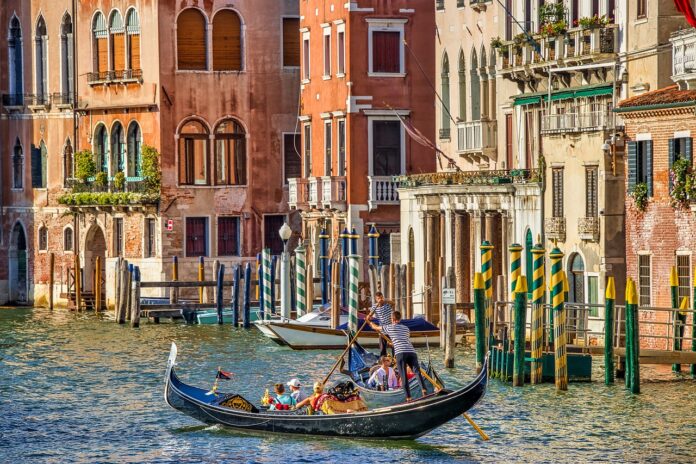It turns out that the fairy-tale-like city, filled with a romantic atmosphere, captivating with its ancient architectural ensembles, inspiring courage and accomplishments, and making people fall in love with it at first sight, exists not only in fantasy books. It is real and marked on all the world maps—this is the legendary Venice.
The uniqueness of this city lies in the fact that it is located on numerous small islands, connected by a system of bridges and canals. There are no roads in the city, and to travel from one point to another, you must move by water. In Venice, this way of life is not a disadvantage but rather a feature—an attraction. The charismatic gondoliers, who define the city’s image, make Venice especially appealing to tourists.
For those visiting Venice for the first time, it feels like being in a magical water kingdom. You might expect a mermaid to emerge from around the corner or Poseidon to majestically stroll by. This picturesque corner of Italy lives by its own rules, leisurely and without haste. Time seems to have slowed down here, preserving for humanity the best heritage of the Renaissance.
Interesting Facts About Venice:
- From the late 7th century to 1797, Venice was considered an independent republic.
- The number of visitors to the city far exceeds the local population. Around 16–18 million tourists visit Venice each year, while the permanent population barely reaches 200,000 (including the suburbs).
- Between November and December, visiting the city can be risky due to frequent rains that raise the water level. In some cases, the ground floors of buildings get flooded. This period is known as “acqua alta” (high water).
- Traditionally, houses in Venice are built on piles made of Siberian larch, which is highly resistant to moisture and sea salt.
- Despite the abundance of water, fires are not uncommon in Venice. Rescuers arrive at the scene on specially equipped boats, but they face the challenge of finding fresh water to extinguish the flames, as using sea water from the canals is prohibited.
- An 18th-century Venetian guidebook mentions the famous Antonio Vivaldi, stating that he and his father were the best violinists in the area.
- During the plague epidemic, the disease claimed more than a third of Venice’s population.
- The longest canal, the Grand Canal, stretches 4 km (2.5 miles). To avoid complications, it was given this simple yet grand name.
- Traditional transportation in Venice includes water buses (vaporettos) and gondolas. Cars can only reach Piazzale Roma, after which movement is either by canals or on foot.
- All Venetian gondolas are built to the same specifications: they are 11 meters long and 1.4 meters wide. Including the gondolier, the boat can hold up to seven people at a time.
- There are always exactly 425 gondolas in Venice’s canals.
- Being a gondolier is both physically and mentally demanding. However, it is one of the most respected and well-paid professions. A water transport license is expensive, but money alone isn’t enough to obtain one. You must be born into a gondolier family, undergo special training, and pass a difficult exam.
- Since 2009, the Association of Gondoliers has not been an all-male club. Georgia Boscolo became the first woman to join, making her name known worldwide.
- Venice has no sewage drains, so all waste goes directly into the canals. On particularly hot days, this creates an unpleasant odor, dampening the charm of the city.
- Additionally, public toilets are scarce in Venice. If you manage to find one, the cost of using it may be high, especially if you’re on a budget.
- Prices in Venice are significantly higher than in other parts of Italy.
- Many architects and engineers are currently seeking ways to lighten the weight of Venice’s buildings while preserving their historical integrity. Due to their heaviness, Venice is slowly sinking, with estimates suggesting the city may be completely underwater within 100 years.
- Venice has an unusual approach to the dead. Initially, they are buried in the cemetery on the island of San Michele, but after seven years, the remains are exhumed and transferred to a columbarium due to limited space.
- The city has a law prohibiting the use of bicycles, except for very young children.
- Another regulation bans feeding pigeons, with a hefty fine for violators. The only place where it’s allowed to feed the birds is St. Mark’s Square. However, eating there is forbidden.
- Many historic buildings in Venice display a special symbol of a lion holding a book. If the book is open, it means the building was constructed during peaceful times, and if it is closed, it was built during war or turmoil.
- In the 17th century, wearing masks was a way for Venetians to maintain privacy in their small, tight-knit community. This tradition was later incorporated into the city’s famous Carnival. However, wearing masks was only allowed during certain times of the year.
